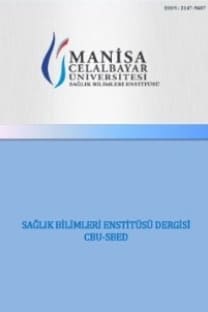İleri Evre Küçük Hücreli Dışı Akciğer Kanserinde Hedef Driver Mutasyonların Tespitinde Likit Biyopsi Doku Biyopsisinin Yerini Alabilir mi?
KHDAK, Likit Biyopsi, Driver mutasyon
İleri Evre Küçük Hücreli Dışı Akciğer Kanserinde Hedef Driver Mutasyonların Tespitinde Likit Biyopsi Doku Biyopsisinin Yerini Alabilir mi?
NSCLC, Liquid biopsy, Driver mutation,
___
- 1. Ferlay J, Shin HR, Bray F, et al. Estimates of worldwide burden of cancer in 2008: GLOBOCAN 2008. Int J Cancer 2010;127:2893–917.
- 2. Devesa SS, Bray F, Vizcaino AP, Parkin DM. International lung cancer trends by histologic type: male:female differences diminishing and adenocarcinoma rates rising. Int J Cancer.2005;117:294–9.
- 3. Heist RS Sequist LV, Engelman JA. Genetic changes in squamous cell lung cancer: a review. J Thorac Oncol. 2012; 7: 924-33.
- 4. Lindeman NI, Cagle PT, Beasley MB, et al. Molecular testing guideline for selection of lung cancer patients for EGFR and ALK tyrosine kinase inhibitors: guideline from the College of American Pathologists, International Association for the Study of Lung Cancer, and Association for Molecular Pathology. Arch Pathol Lab Med 2013; 137:828.
- ISSN: 2147-9607
- Yayın Aralığı: 4
- Başlangıç: 2014
- Yayıncı: Manisa Celal Bayar Üniversitesi Sağlık Bilimleri Enstitüsü
Kaviter Akciğer Lezyonu İle Başvuran Hodgkin Lenfoma Olgusu
Triyaj Uygulamalarında Hemşirelerin Rolleri
Müzeyyen Ataseven TARHAN, Semiha Akın
1. ULUSLARASI LİSANSÜSTÜ EĞİTİM KONGRESİ BİLDİRİ KİTABI
Rabdomiyolize Bağlı Akut Böbrek Yetmezliği ve Otoimmun Hemolitik Anemi Birlikteliği
Aysun TORAMAN, Lütfi Çetintepe, İsmet Aydoğdu, Neslihan Erdem, Semra Tutcu Şahin, Necmettin Güvence, Seyhun Kürşat
